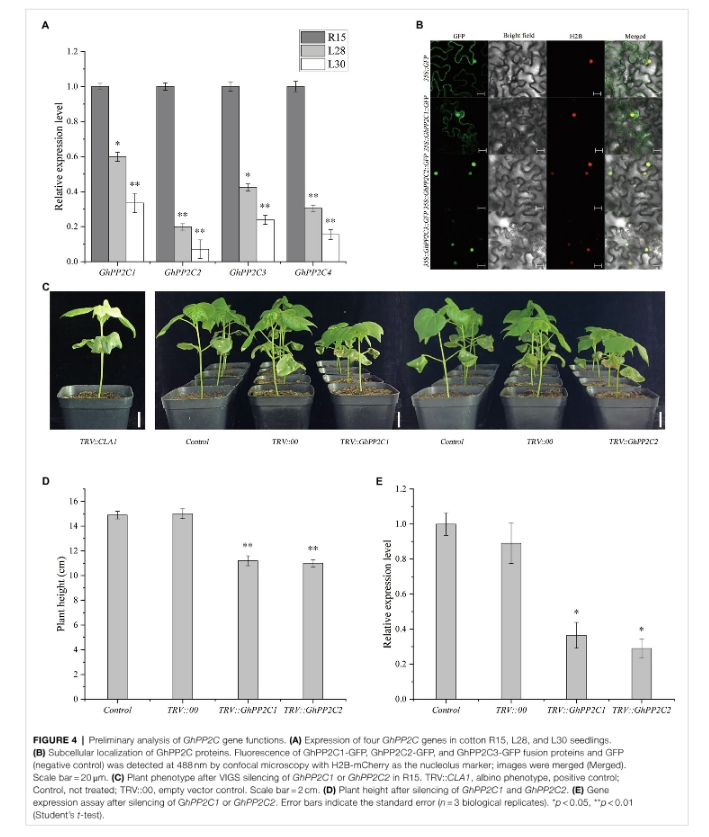Abstract:
Dwarfism is a beneficial trait in many crops. Dwarf crops hold certain advantages over taller crops in lodging resistance, fertilizer tolerance, and yield. Overexpression of CBF/DREB transcription factors can lead to dwarfing in many plant species, but the molecular mechanism of plant dwarfing caused by overexpression of CBF/DREB in upland cotton (Gossypium hirsutum) remains unclear. In this study, we observed that overexpression of the Ammopiptanthus mongolicus AmCBF1 transcription factor in upland cotton R15 reduced plant height, whereas virus-induced gene silencing of AmCBF1 in the derived dwarf lines L28 and L30 partially restored plant height. Five protein phosphatase (PP2C) genes (GhPP2C1 to GhPP2C5) in cotton were identified by RNA-sequencing among genes differentially expressed in L28 or L30 in comparison with R15 and thus may play an important role in AmCBF1-regulated dwarfing in cotton. Gene expression analysis showed that the GhPP2C genes were down-regulated significantly in L28 and L30, and silencing of GhPP2C1 or GhPP2C2 in R15 inhibited the growth of cotton seedlings. Subcellular localization assays revealed that GhPP2C1 was localized to the cell membrane and nucleus, whereas GhPP2C2 was exclusively localized to the nucleus. Yeast one-hybrid and dual-luciferase assays showed that AmCBF1 was able to bind to the CRT/DRE elements of the upstream promoter of GhPP2C1 or GhPP2C2 and repress their expression. These findings provide insight into the mechanism of dwarfing and may contribute to the breeding of dwarf cultivars of upland cotton.
Keywords:cotton;transcription factor;AmCBF1;GhPP2C;plant architecture and plant height
Keywords Plus:RESPONSIVE GENE-EXPRESSION;ACID SIGNAL-TRANSDUCTION;2C PROTEIN PHOSPHATASES;ORYZA-SATIVA L;ABSCISIC-ACID;LOW-TEMPERATURE;ROOT-GROWTH;NEGATIVE REGULATOR;DWARF MUTANT;HIGH-SALT



